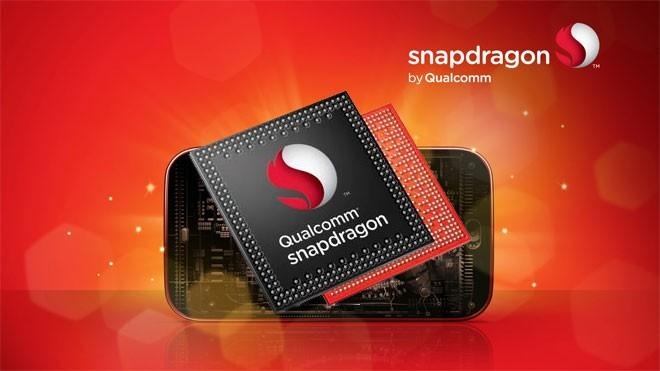Intel Is Finally Catching Up On Mobile
This week was Intel usual time to shine at the annual IDF and, unsurprisingly, it revealed a great many things. It even had a Tango smartphone (with a NERF gun!) to show off. Now, if you've been watching the mobile industry for quite some time now, you'd know that "Intel" and "smartphone" don't usually go in the same sentence. Of course, the RealSense Tango smartphone is primarily a developer's toy, but this still makes us ask the big questions. Has Intel finally caught up with its rivals in the mobile space? Or will it be forever trailing behind?
The big, old Intel
When it comes to mobile chips, you'll mostly hear about Qualcomm, Samsung, MediaTek and maybe even RockChip or Allwinner before you hear about Intel. Intel has, so far, failed to capture that part of the market. And it's not because it doesn't know how to make processors. After all, it's the oldest name in the block. The problem is that it mostly knew how to make practically one kind of chip, the kind that radiates power and, therefore, heat.

Intel's chip business has always revolved around PCs, servers, mainframes, and all other powerhouse workstations you can think of. It does laptops too, of course, but those chips are closer to the desktop kind than to the smartphone kind. They used less power, that much is true, but still considerably more than a Qualcomm. And performance, of course, had to be throttled down a notch compared to their desktop brethren. While progress in chip manufacturing processes and technology allowed for smaller and smaller chips to be made, chips designed for PCs and servers, the type that Intel makes, mostly focus on achieving peak performance. While heat generation and power consumption are of course important considerations, they aren't on equal footing, mostly because those types of computers can employ different methods of cooling and, by nature, gobble up considerable amounts of power.
The mobile revolution
This is almost in start contrast to what is expected of mobile chips, which are seemingly designed from the opposite end of the spectrum. Power and heat constraints are placed first and only then do you engineer how to squeeze out as much performance as you can. This kind of chip design has mostly been the purview of the likes of ARM/RISC and MIPS processor architectures that have been designed right from the beginning for resource-constrained devices.
This was where Intel's problem with mobile laid. It was coming from a different starting point and was trying to scale down its chips to mobile and embedded systems. Until recently, it has been regarded as a failure in that aspect. Its Atom chips, its lower power processor line failed to achieve the trifecta of performance, heat dissipation, and power management that the likes of Qualcomm's Snapdragons offered in multiple price tiers. Although they did well for low powered notebooks, they fared less in smartphones and sometimes even in tablets.

While these were more technical reasons for Intel's failure to grab the mobile market by the horns, some also allude to the company's slow moving and even stubborn nature as an equally critical cause as well. As a giant, it was hard for Intel to be agile in adapting to the fast growing market. And it was also perhaps difficult for it to admit that there is a new device category where it doesn't have all the answers to.
Intel's new bet
It seemed, at least for a time, that Intel lost any credibility in the mobile market. Sure, there were Intel-powered smartphones and even more Intel-powered tablets, but those are far and few in between. And they still are in comparison to the overall market. Perhaps as a reaction, it seemed that Intel was no longer interested in vigorously chasing after the elusive smartphone market, but unlike NVIDIA,who completely threw in the towel, Intel was preparing to strike at the problem from another angle, the wearable angle.
Despite smartwatches being fashionable now, the wearable market is still in its infancy. There is still no clear winner in this part of the chip market. Even Qualcomm can only go as far. Intel saw an opportunity to both blaze a trail and to also play around with less risk than in a more established smartphone market. Wearable allowed Intel to dream big by going even smaller. In September 2013, it revealed its play: Intel Quark, even smaller, but also less powerful, than an Atom (see what they did there?). This was followed in January last year by Edison, a Quark-powered System-on-Chip no bigger than an SD card. Eventually, Intel would reveal the MICA smart luxury bracelets, its first actual wearable product. And now the list grows ever longer. TAG Heuer's smartwatch will be powered by Intel supposedly and there are rumors of an Intel Atom driving the new Google Glass Enterprise Edition.

Perhaps Intel's rationale is this. If it manages to prove itself in the wearable market, then it will have a second chance at the smartphone too. After all, the requirements for wearable are even more constrained than on mobile. Amusingly enough, that might no longer be the case soon anyway.
A new mobile trend
Intel might soon have its second chance even while its wearable play is still ongoing. Smartphones are becoming more powerful and might soon be reaching the same level as the least powerful netbook (if that category still exists). Some might even claim smartphones have surpassed that. If so, then Intel has a second chance now that the fight is entering into its turf of performance and power. Of course, ARM chips have the head start when it comes to heat and energy consumption, but as the Snapdragon 810 shows, even Qualcomm is now having a bit of a problem balancing that out.
On the other hand, Intel has been getting better. It was definitely not simply doing nothing all this time. From a new branding strategy that put its Atom family on the same naming line as its Core chips, to iteration after iteration of Atom chips, Intel has been persistent in pushing, if not shoving, its chips into mobile devices. And it's somewhat starting to bear fruit. While still not as many, there are already some notable Intel mobile devices in the market today. There are actually quite a few Android tablets that bear an Atom and of course almost countless Windows tablets and hybrids with both Atom and Core choices. And for smartphones, the high end ASUS ZenFone 2, particularly the one with 4 GB of RAM, is quite the beast.
Suffice it to say, Intel has a better chance now to catch up than ever before.
Final Thoughts
Intel has had a very rough start when it comes to getting on the mobile bandwagon and almost had to bail out for a while. But its persistence might be finally starting to pay off. Its chips, especially on the lower Atom and Core M side, are starting to show promise. And while it hasn't exactly cornered the wearable market, it is striking up partnerships with names and companies that matter the most, even if sometimes the products aren't something you can buy off a shelf. And perhaps it helps a bit that competition among mobile chip makers is getting more heated, maybe even underhanded, allowing another big player to take advantage.
Intel might still not be a major name when it comes to the mobile, particularly the smartphone world, but the winds of change are starting to blow even there, which could give Intel a much needed break. Who knows? Maybe in a year or so, you will start seeing that iconic "Intel Inside" sticker in every other smartphone box.
